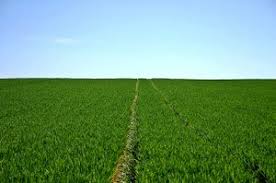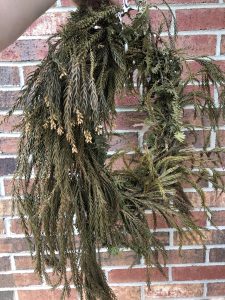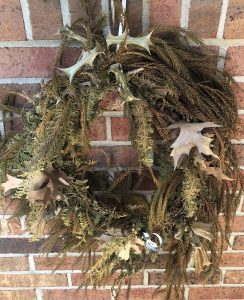Sydney Andersen
Vast stretches of America are devoid of nutritious food, with no ready access to fresh vegetables or grocery stores in both rural and urban areas. Even in places where our food is grown, agricultural workers do not see what they have produced returned to  them in shopping carts or local farmer’s markets. McDonald’s and ready-made fast food options spread like a rash through these ‘food deserts,’ causing obesity, health problems, and lack of community. In the United States alone, there are at least 23 million people living in food deserts, and more than half of them reside in low-income areas where they may not have the resources to travel to a grocery store or the leisure time to cook meals.
them in shopping carts or local farmer’s markets. McDonald’s and ready-made fast food options spread like a rash through these ‘food deserts,’ causing obesity, health problems, and lack of community. In the United States alone, there are at least 23 million people living in food deserts, and more than half of them reside in low-income areas where they may not have the resources to travel to a grocery store or the leisure time to cook meals.
So what can be done to ensure that all American people enjoy the benefits of fresh food options? In rural areas, more advocation for small farms and strong legislation to promote  producing a variety of products, rather than just one mono-crop, would give farmers the support to produce food for themselves and their communities. Doing this would hopefully bolster community ties and allow rural areas to put on farmer’s markets and enrich their diets. However, in urban areas there are no local farmers to produce food at all, so it seems cities are doomed to stay deserts forever…
producing a variety of products, rather than just one mono-crop, would give farmers the support to produce food for themselves and their communities. Doing this would hopefully bolster community ties and allow rural areas to put on farmer’s markets and enrich their diets. However, in urban areas there are no local farmers to produce food at all, so it seems cities are doomed to stay deserts forever…
But there is a way!
Urban agriculture can have a huge impact on the diet and sense of community in an urban area. It still requires leisure time to communally plant and harvest produce, but if supported properly by city governance  and if city residents are involved, urban agriculture can easily alleviate the effects of food deserts. Cleveland, Ohio, a city entrenched in the rust belt and prone to economic decline and depopulation, is one of several American cities who have successfully integrated urban green and agricultural space. Over the past couple decades, city legislators have established community gardens in vacant lots around the city so existing space can be repurposed in a sustainable way. In fact, the most successful community garden, the Ohio City Farm, is on urban land deemed unsuitable for building. The city manages it and coordinates volunteers, extends jobs to refugees who were farmers and agricultural workers in their homeland, and offers free nutrition education to city residents. These steps can be taken by any urban area, large or small, to stop food deserts from drying up good nutrition and healthy communities in America.
and if city residents are involved, urban agriculture can easily alleviate the effects of food deserts. Cleveland, Ohio, a city entrenched in the rust belt and prone to economic decline and depopulation, is one of several American cities who have successfully integrated urban green and agricultural space. Over the past couple decades, city legislators have established community gardens in vacant lots around the city so existing space can be repurposed in a sustainable way. In fact, the most successful community garden, the Ohio City Farm, is on urban land deemed unsuitable for building. The city manages it and coordinates volunteers, extends jobs to refugees who were farmers and agricultural workers in their homeland, and offers free nutrition education to city residents. These steps can be taken by any urban area, large or small, to stop food deserts from drying up good nutrition and healthy communities in America.
Sources:
Quick, S. (2014, April 3,). A town called malnourished. Newsweek Magazine, Retrieved from www.newsweek.com/2014/04/11/town-called-malnourished-248087.html
Flachs, Andrew. “How Agricultural Policies Can Support New American Farmers.” Scholars Strategy Network, scholars.org/contribution/how-agricultural-policies-can-support-new-american-farmers.
Masi, B., Fiskio, J., & Shammin, R. (2014). Urban agriculture in rust belt cities. The Solutions Journal, 5(1), 44-53. Retrieved from https://www.thesolutionsjournal.com/article/urban-agriculture-in-rust-belt- cities/



 them in shopping carts or local farmer’s markets. McDonald’s and ready-made fast food options spread like a rash through these ‘food deserts,’ causing obesity, health problems, and lack of community. In the United States alone, there are at least 23 million people living in food deserts, and more than half of them
them in shopping carts or local farmer’s markets. McDonald’s and ready-made fast food options spread like a rash through these ‘food deserts,’ causing obesity, health problems, and lack of community. In the United States alone, there are at least 23 million people living in food deserts, and more than half of them  and if city residents are involved, urban agriculture can easily alleviate the effects of food deserts. Cleveland, Ohio, a city entrenched in the rust belt and prone to economic decline and depopulation, is one of several American cities who have successfully integrated urban green and agricultural space. Over the past couple decades, city legislators have
and if city residents are involved, urban agriculture can easily alleviate the effects of food deserts. Cleveland, Ohio, a city entrenched in the rust belt and prone to economic decline and depopulation, is one of several American cities who have successfully integrated urban green and agricultural space. Over the past couple decades, city legislators have